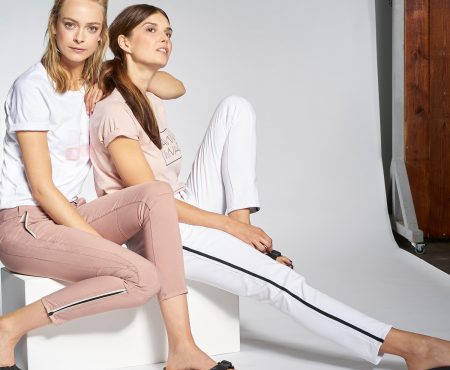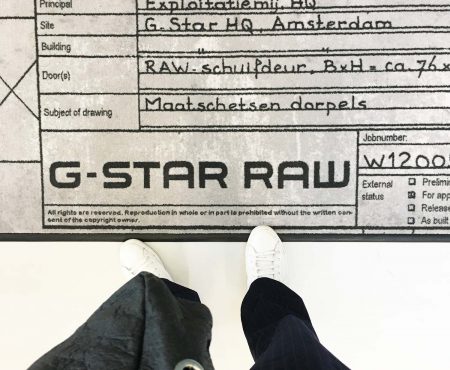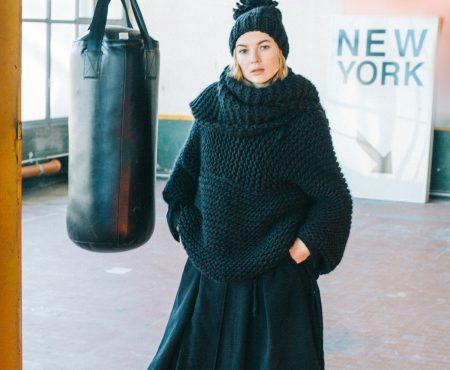Radical transparency? Dog fashion? First a bit confusing, but no – the assumption is obvious – but it is not a label for dog and owner. In addition to wonderfully clean, fair and environmentally friendly produced favorite looks there are also beautiful dog leashes at Hund Hund, but the special feature of the Berlin label of Isabel Kücke and Rohan Michael Hoole is the radical transparency of pricing. This can be traced next to every single garment in the online shop.
With a clear style and radical transparency along the value chain for a new consciousness

From fabric price to actual profit. And that does not like one or the other global player in the fashion industry at all. Because here can be read off exactly what decently produced garments could ideally cost, if there were not the greed of profit of the fashion giants … I met with the two in a Berlin cafe – espresso machines, blue lights & Co. tried to disturb our conversation in the Café St. Oberholz, but we did not let us bother us. The topic is just too exciting. Of course, the two have worn parts from their own collection. Isabel a men’s jacket, which is now often bought by women. This too is a concept that is quite sustainable. Just as the work with textile remainders, because what no longer needs one, for the other, as in the case of Hund Hund, the perfect material can be.
From Von Hund became Hund Hund – the radical transparency remained
Good to know: The two of them launched their label in July 2016 as Von Hund (German: dog). Meanwhile, they have – a Danish fashion label felt too great a name resemblance – renamed Hund Hund. Yes, if you dig your finger in the “fashion wound” you do not just have friends. But that does not stop them from maintaining radical transparency and inspiring their growing fan base with great collections. Why did a second dog come to the first? Every dog needs his buddy. It is obvious!
A conversation about radical transparency and the long overdue change in the fashion industry
my-GREENstyle: Isabel, you went to Bombay after your studies?
Isabel: During my studies I got a sense crisis. I was wondering why I am dealing with such superficial things. At that time I got the opportunity to do an internship in an embroidery in India. There I worked for Prada, Louis Vuitton, Kenzo & Co. and I had to tell the workers how important it is to finish their work quickly because Fashion Week is in Paris etc. But these workers have very different problems than Fashion Weeks.
My stay in India has changed my view of fashion a lot
It opened my eyes and I decided not to take the topic seriously anymore. That changed my view of fashion a lot. After graduation I wanted to go back to India to start my own embroidery. Together with a partner, I was able to hire all my friends there and make the working conditions more comfortable, at least for these people.
my-GREENstyle: From embroidery in Bombay to Hund Hund. How do we imagine that?
Isabel: Rohan wanted to leave India and do something new. Yes, and then we have launched Hund Hund, with the idea of ethically producing and practicing radical transparency.
my-GREENstyle: You both lived in India. Why don´t you produce there?
Rohan: For us, ethical means approaching things from a social perspective. We know how important it is for people in India to have jobs. But to let people work in the cheapest and worst conditions? That is out of the question for us. We knew that we could not produce ethically correct in India.
In India, you can not produce ethically correct because it is constantly outsourced
There, proper working conditions can not be guaranteed because work is constantly outsourced. Therefore, we only produce in Europe and use only fabrics that come from Europe. It does not always have to be like that, but right now that’s the only solution.
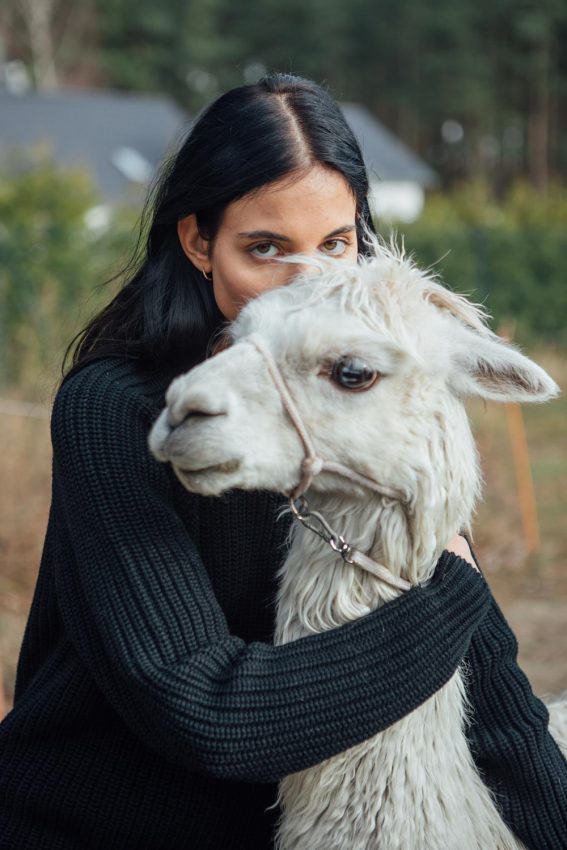
my-GREENstyle: And what makes Hund Hund so special?
Rohan: A Hund Hund theme is pricing. The fact that people can afford our things. In terms of price, we are comparable to COS. There are great labels like Stella McCartney and Maiyet, but they are priceless to the average person.
Isabel: It is contradictory to say that you do something good for the world, but many can not afford it. That’s why we try to get it affordable despite higher costs.
my-GREENstyle: The high price for sustainable fashion is always cited as a death-strike argument, why sustainable fashion does not work..
Rohan: That’s also the problem of many small, sustainable labels here in Berlin. They are too expensive because they are trapped in the production process. They buy small quantities of textiles from expensive manufacturers and sell their collections through the shops. To the actual costs then come the dealer margins, which are at 2.7. Even if the collections are produced to be affordable, they will become priceless at the latest by selling through the shops.
Because we are not 100 percent sustainable yet, we have a mission
That’s why we wanted to set up a label that does not necessarily produce 100 per cent sustainable from day one, but works under fair conditions, respects the environment and is affordable. And that’s why we only sell directly. Currently still on our online shop.
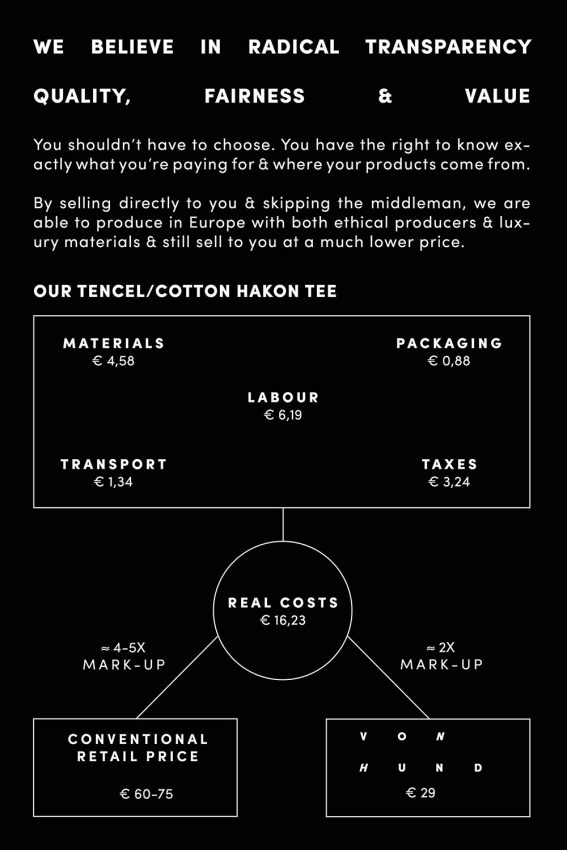
Isabel: We wanted to close the gap between cool conventional collections from Acne, COS & Co. and priceless eco-collections. And from our sales we can see that the desire for this fashion is definitely there! More and more people are buying organic food and are also looking for more sustainable solutions in the fashion industry. But they do not know where to find what they are looking for. The offer is still very limited.
my-GREENstyle: And what’s the best for you in your work?
Isabel: We get calls from customers who just wanted to ask for their size and then tell us that they love our concept, our radical transparency. That confirms us.
Cost of materials, labor hours, packaging, transportation, taxes and profits are disclosed
When Hund Hund was still in the beginning, we had an article in the world. This has brought us customers who might not necessarily have become customers by design. But they are simply convinced of our concept, of the radical transparency we set on.
my-GREENstyle: But what exactly does radical transparency mean for the end consumer?
Rohan: We rely on radical transparency in prices because we simply want to enlighten. It’s not that the customer would not care. He just simply has no way of knowing how much of his money is going where, because many big labels are very interested in keeping that secret. As well as the fact under which conditions the garment was made.
Due to the radical transparency, the customers become mature buyers again
And we want to tell the whole story comprehensible to give the customer an idea of how it can work. He can then make his own thoughts about it, as it perhaps happens elsewhere. The more people talk about these topics, the more awareness there is in society. Transparency can have many facets. You can make your production processes transparent, or even show where you get your yarn from. Every form of transparency is positive. And together, it makes people think more.
my-GREENstyle: Is there another fashion label that, like you, has committed to radical transparency?
Isabel: There is, for example, Honest by von Bruno Pieters – the label is small, but they were the first to work with transparency. In America, Everlane works very successfully with transparency.
my-GREENstyle: You work with textile leftovers?
Rohan: About 70 percent of our collection is made from leftovers..
Textile leftovers, radical transparency – affordable fashion Made in Europe by Hund Hund
Isabel: Many great designers have fantastic fabrics that they no longer use after the collection is completed. They are then either burned or people like us buy up these leftovers. Of course you can not reproduce infinitely, because the stuff is finally, but so we have to produce little new and therefore produce significantly less waste. It also has the advantage of being able to purchase high-end fabrics at a much lower price. This also has a positive effect on our resale prices.
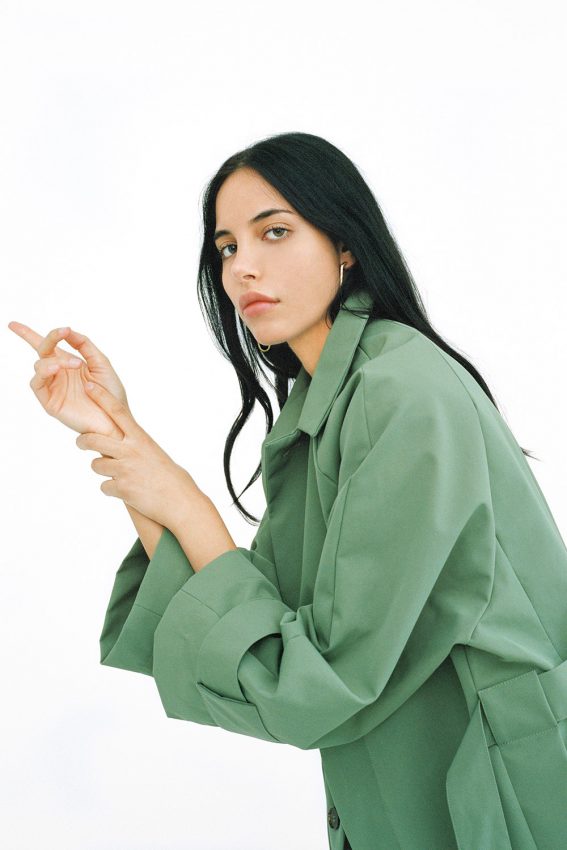
my-GREENstyle: And what kind of materials do we find at Hund Hund?
Rohan: We use as little polyester as possible. No plastic. A lot of Tencel. The water consumption in the production is just 5 percent compared to cotton. Even if it’s organic cotton, it just can not compete with Tencel. We just ordered a fantastic Tencel twill and we found fantastic organic jersey.
Every year we are looking for ways to become even more sustainable
We also work with viscose and micro-modal and of course cotton. Every year we are looking for ways to become even more sustainable. But that means very time-consuming research and is slow, because we also want to keep the quality high.
my-GREENstyle: And what about denim?
Rohan: Unfortunately, denim is still a problem. Although there is denim made of hemp, but that is very expensive. We always look around for new solutions. And the market is constantly developing new textiles such as Q-Milk, which even comes from Germany .
my-GREENstyle: Do you work at Hund Hund in seasons?
Isabel: We started with normal seasons. Meanwhile, we work with smaller drops. If you show your entire collection at the beginning of the season on the website, the customers sees no need to come back. After all, they already knows everything. But if you gradually scatter the collection, they always comes back.
my-GREENstyle: And of how many “drops” you are talking about?
Rohan: At the moment we have expanded the distribution to eight mini-collections – in the next three months. This is a real challenge for the designer (laughs). These are then at most eight Styles in three to four different patterns that we change with each other. Sometimes it is enough to use a different material, because the part is completely different.
Isabel: We simply have very small amounts of some substances. Since it offers to work with such mini-collections.
We are launching eight mini-collections within three months – that’s how the customers keep coming back
my-GREENstyle: And how many pieces do you produce per look on average?
Rohan: That’s hard to say. Sometimes we just see a fabric that we like incredibly well. But if there is only a small amount of it, the garment will only be available ten times.
my-GREENstyle: Is there a particular bestseller at Hund Hund?
Isabel: Our men’s pants are fantastic. Above all, the “Anzo Pants” and the “Volcher Pants” – we have them from the beginning in the collection and now produce them again and again from new materials. “Anzo” we have released as men’s pants – now it is also excellent for women.
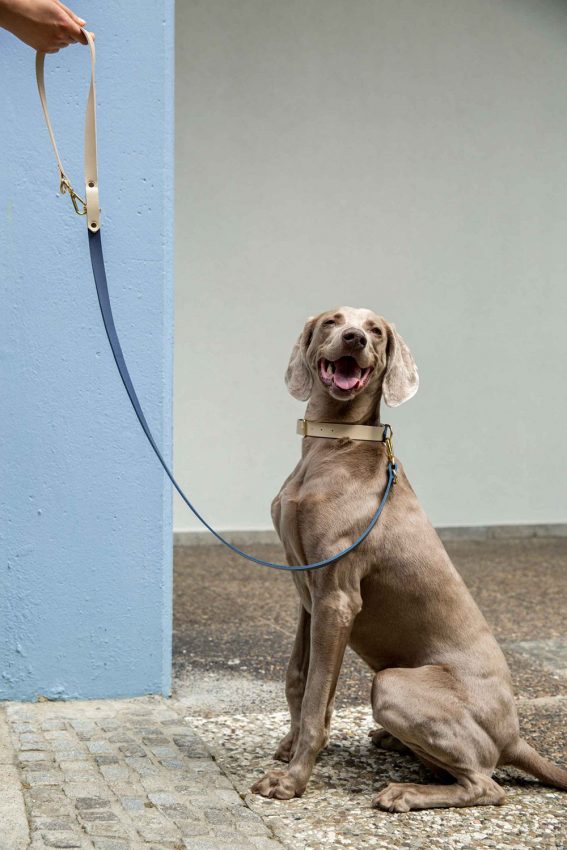
my-GREENstyle: Do you have any more unisex pieces in the collection?
Isabel: In fact, many parts have simply become unisex models over the time because they have been discovered and approved by the opposite sex. Interestingly, some parts even go better with women than men, though they were planned different.
Some parts have recently become unisex models
my-GREENstyle: Anzo, Zelda, Birk – your collection parts have very special names. Where are they from?
Isabel: Those are old German names. Some are also Swedish. Some parts also have names from our friends. Actually, there is no big story behind it. Originally we wanted to give things dog names, but that sounded really weird. Quite apart from the fact that we quickly ran out of typical dog names …
my-GREENstyle: So, now we have finally come to the dog. And how did you come up with the name?
Rohan: In Bombay, we went for a walk every day before work and were accompanied by street dogs. We bought the dogs food or brought something in Tupperware. Then it turns out that there are some people doing it and the dogs are getting fatter … (laughs). And when we talked about starting our own label, my condition was that we also do something for dogs.
Isabel: I was always a little scared of having my own fashion label. At the same time, fashion is a really tough business and often superficial on the other side. I wanted to give the whole thing a bit more soul and get some more fun for me – well, and the dog theme is just right. I say only: Aww, a dog …
Rohan: Apart from the fact that we both like dogs, there is no big story.
Hund Hund? We both like dogs. Otherwise there is no big story to our name
my-GREENstyle: You are not at the fairs and the Fashion Week?
Rohan: Because we only sell directly, that does not make sense. Direct selling not only has a positive effect on the lower resale price. It also leads to having a more direct access to our customers.
Isabel: It helps us understand what customers really want. We work from home and do not have a shop. But if somebody writes us, for example, that he wants to try on our things, we invite him to our home. This is a bit unusual, but charming and gives us a face. So we can have personal conversations and learn something about our stuff at the same time. At first I made things too big, for example, because I’m very tall and designed everything in my size.
my-GREENstyle: Do you think about a shop? If you continue to grow, there will be a lot going on in your home.
Rohan: Yes, we’ve been looking for suitable shops for about six months. But so far we have not really looked seriously. We always have so much else to do.
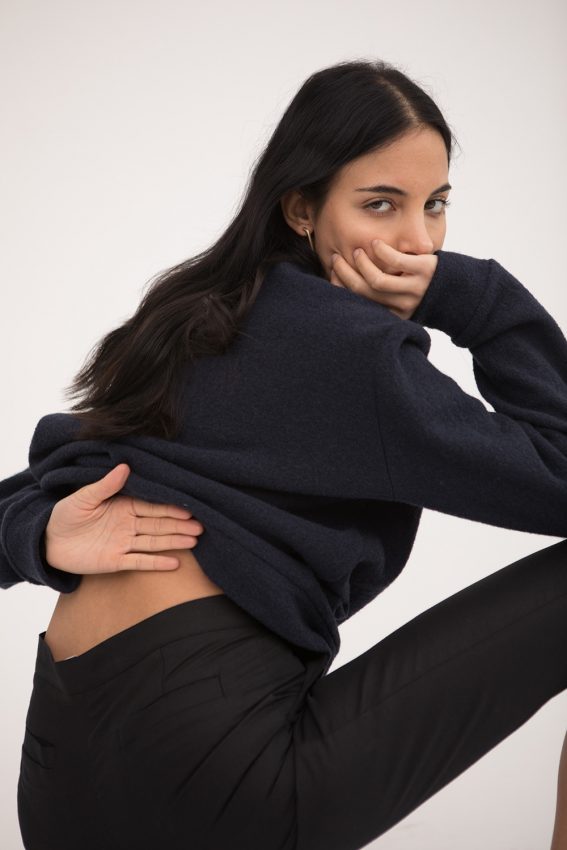
Isabel: We are looking for something here in the area (we met in a café on Rosenthaler Platz for an interview) or near our home. I think that Neukölln would be great. We have many neighborhood customers and that really gives us a face.
The fashion industry is the second largest polluter worldwide – we definitely need a change
my-GREENstyle: Now you are wearing parts from your own collection. What did you wear before Hund Hund?
Rohan: Preferably COS and Acne.
Isabel: I have a lot of old stuff in my closet because I do not like shopping. I’m just too tall for the average dress size. I also bought at COS – like three black jeans at once, because they fit. That’s why I’m very happy that we have our own label. So I was able to extend my wardrobe (laughs).
my-GREENstyle: Has anything changed for you over the years?
Isabel: Sustainability has become so much more important to me when I went to India. I had this idea of radical transparency. But when I saw all this garbage and the tons of plastic, I thought, “Oh my god,” then I researched to do it differently. And the more you research, the more your desire for more sustainability grows.
Ronan: We are still so small so we can´t do much. But we have already received reactions from big players, to whom we are a real thorn in the eye with our price transparency. And that’s fantastic.
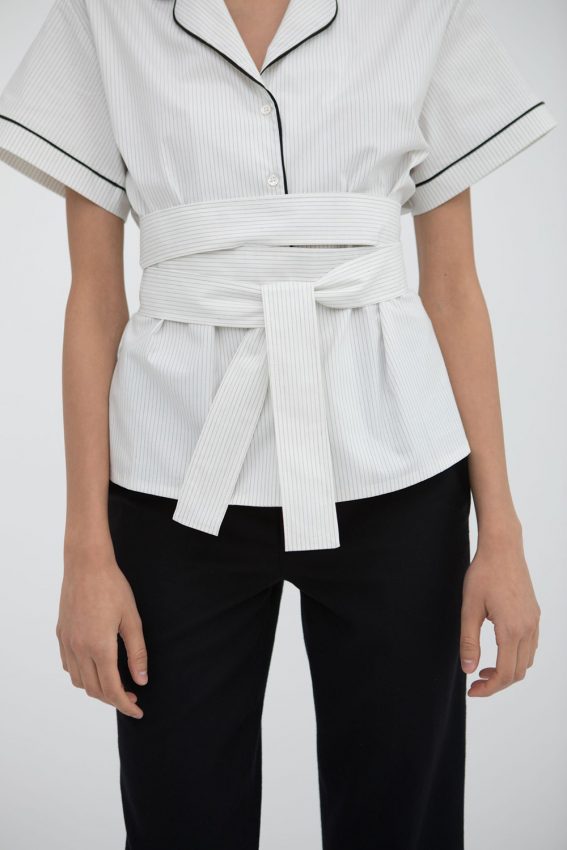
The pressure is growing and they can´t stop us. We need a change in our consciousness and how textiles are made and resold. The fashion industry is the second largest polluter worldwide. There are a bunch of smart, creative people who know we can do better. We can make sustainability a priority in our process. If we do not rethink and act, nothing will change.
[su_quoteSo many people are addicted to XS prices without thinking about the consequences[/su_quote]
my-GREENstyle: One last word …
Rohan: People are ready to spend some more money on organic food. I hope that someday they will be willing to spend a little more on sustainable and fair fashion. And that we finally consume less. It is our world. We finally have to do something.


